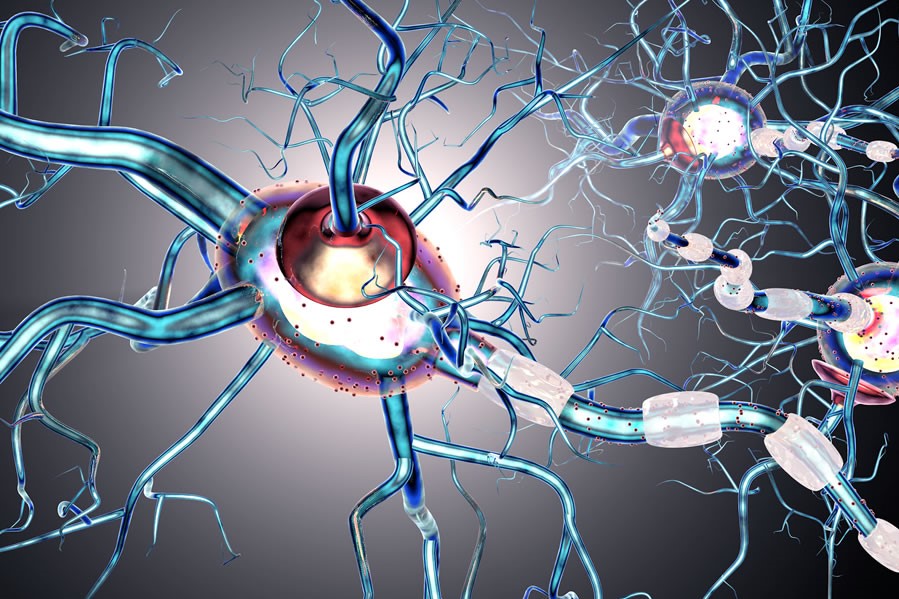
Multiple Sclerosis: what are the symptoms, when to go to the emergency room
Multiple sclerosis (MS) is a serious and debilitating disease, but many individuals live full lives after diagnosis. Symptoms can appear suddenly and be extremely frightening
Some of them may occur suddenly and affect serious aspects of health, such as breathing: do not hesitate in relation to them to call the Emergency Number or go to the emergency room. And in any case to consult your doctor.
What is multiple sclerosis?
Multiple sclerosis affects the brain and central nervous system.
Our own organism attacks the myelin, which is a sheath that surrounds the nerves, just like a covering for an electrical cable (Morel 1999).
When myelin deteriorates, we lose nerve function, nerves misfire or are permanently and irrevocably damaged.
This damage can cause further life-threatening complications.
Symptoms of MS
Multiple sclerosis is sometimes difficult to diagnose.
No two people have the same symptoms and symptoms can come and go.
There are about 20 identifiable symptoms, the 14 most common of which are listed on the National MS Society website:
- Fatigue
- Difficulty walking
- Numbness or tingling
- spasticity
- weakness
- Problems with vision
- Dizziness
- Bladder problems
- Sexual problems
- Bowel problems
- Pain and itching
- Cognitive changes
- Emotional changes
- Depression
Diagnosis of MS
Diagnosing MS requires doctors from different disciplines to work as a team to identify the symptoms, which can affect various internal organs, nerves, skeletal problems, vision and more.
The most important factor is to start the medical diagnosis as early as possible.
This can reduce symptoms or delay damage to affected body parts.
Some people experience remission, even long-term remission, i.e. a period when symptoms are minimal.
Who gets multiple sclerosis?
Multiple sclerosis is the most common disabling neurological condition among young adults worldwide.
One can develop MS at any age, but most people are diagnosed between the ages of 20 and 50 (Healthline 2018).
Demographic factors, such as place of residence, can also come into play.
This increases the complexity of the disease.
There are approximately 2 million cases of MS globally and 1 million cases diagnosed in the United States.
The number of MS diagnoses is twice as high in the northern states of the US and Canada.
This is a discouraging and mystifying statistic.
When MS requires a visit to the emergency room
Although a person with known MS may already be undergoing treatment, the sudden onset of a symptom such as blindness or severe mobility problems may require an emergency room visit.
A long-term chronic condition such as MS is not normally seen in the emergency room on the first visit, but if symptoms occur late at night or if immediate attention is desired because they may involve breathing difficulties, referring to the emergency room is the best solution.
References
“Multiple Sclerosis.” Mayo Clinic, Mayo Foundation for Medical Education and Research, 19 Apr. 2019, www.mayoclinic.org/diseases-conditions/multiple-sclerosis/symptoms-causes/syc-20350269.
Morell, Pierre. “The Myelin Sheath.” Basic Neurochemistry: Molecular, Cellular and Medical Aspects. 6th Edition., U.S. National Library of Medicine, 1 Jan. 1999, www.ncbi.nlm.nih.gov/books/NBK27954/.
“MS Symptoms.” National Multiple Sclerosis Society,
www.nationalmssociety.org/Symptoms-Diagnosis/MS-Symptoms.
Read Also
Emergency Live Even More…Live: Download The New Free App Of Your Newspaper For IOS And Android
Multiple Sclerosis: What Are The Symptoms Of MS?
Rehabilitation Therapies In The Treatment Of Systemic Sclerosis
Diagnosis Of Multiple Sclerosis: Which Instrumental Tests Are Essential?
ALS Could Be Stopped, Thanks To The #Icebucketchallenge
Relapsing-Remitting Multiple Sclerosis (RRMS) In Children, EU Approves Teriflunomide
ALS: New Genes Responsible For Amyotrophic Lateral Sclerosis Identified
What Is “Locked-In Syndrome” (LiS)?
Amyotrophic Lateral Sclerosis (ALS): Symptoms To Recognise The Disease
Multiple Sclerosis, What It Is, Symptoms, Diagnosis And Treatment
CT (Computed Axial Tomography): What It Is Used For
Positron Emission Tomography (PET): What It Is, How It Works And What It Is Used For
CT, MRI And PET Scans: What Are They For?
MRI, Magnetic Resonance Imaging Of The Heart: What Is It And Why Is It Important?
Urethrocistoscopy: What It Is And How Transurethral Cystoscopy Is Performed
What Is Echocolordoppler Of The Supra-Aortic Trunks (Carotids)?
Surgery: Neuronavigation And Monitoring Of Brain Function
Robotic Surgery: Benefits And Risks
Refractive Surgery: What Is It For, How Is It Performed And What To Do?
Single Photon Emission Computed Tomography (SPECT): What It Is And When To Perform It


